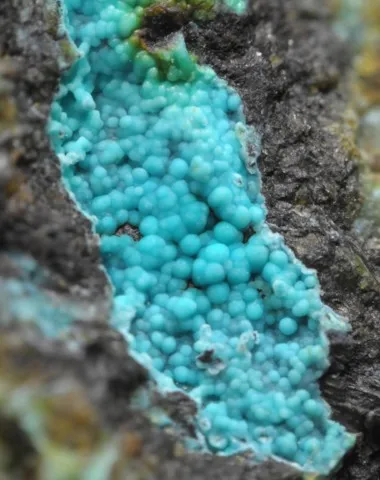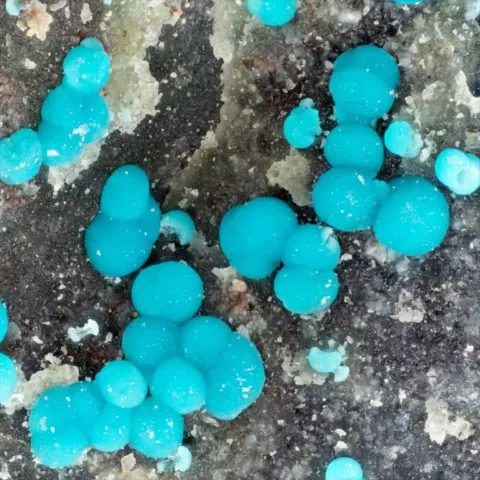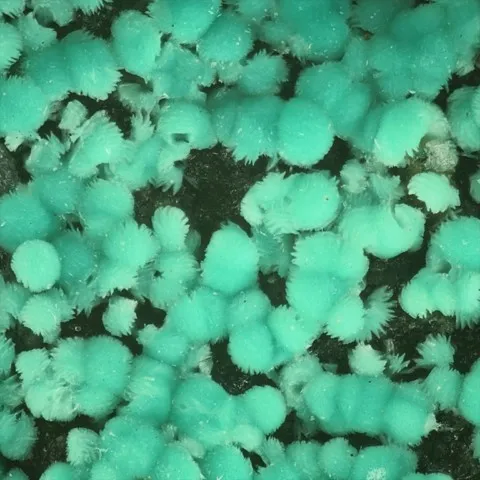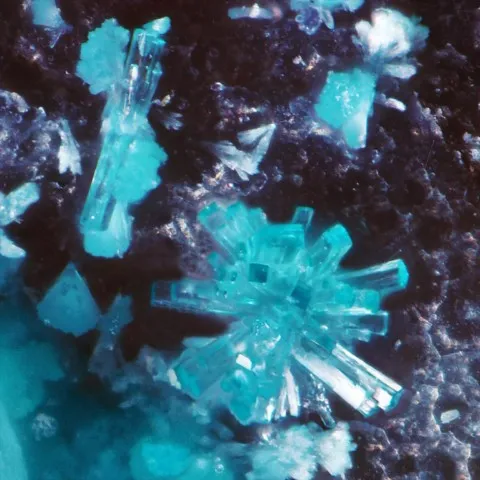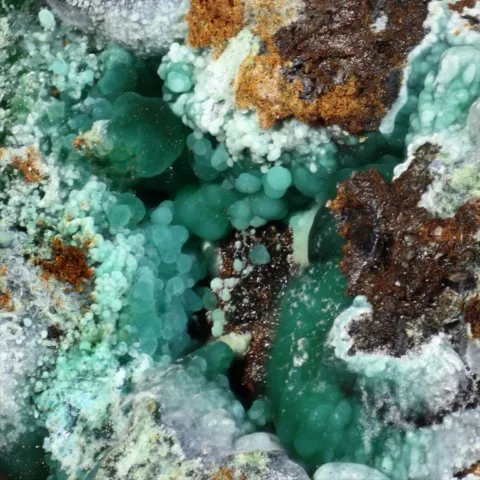MCGUINNESSITE
Class : Carbonates, nitrates, borates
Subclass : Anhydrous carbonates
Crystal system : Monoclinic
Chemistry : (Mg,Cu)2(CO3)(OH)2
Rarity : Very rare
Mcguinnessite is a very rare secondary carbonate from the oxidation zone of copper deposits, where it is associated with chrysocolla, malachite, goethite and azurite. It was named in honor of the American merchant Albert L. McGuinness who discovered some new species. Macguinnessite forms small fibers united into spherules of 2 mm in diameter maximum. The color, usually blue-green, varies according to the composition, going from a clear blue in the copper terms to a pale blue-green to almost white for the magnesium terms.
Main photo : Mcguinnessite from Lobminggraben, Styria, Austria © Christian Auer
Mcguinnessite in the World
Twinning
No twin known for this mineral species.
Fakes and treatments
No fakes recorded for this mineral species.
Hardness : 2.5
Density : 3.02 to 3.22
Fracture : Undetermined
Streak : White
TP : Translucent
RI : 1.596 to 1.732
Birefringence : 0.128 to 0.130
Optical character : Biaxial -
Pleochroism : Low
Fluorescence : None
Solubility : Acids
Magnetism : NoneRadioactivity : None

